Shame on CAPE!
CAPE = Canadian Association of Physicians for the Environment
Ronald Macfarlane, lead author of the report, is not a medical doctor (nor it appears is his co-author), and not part of CAPE. Nowhere on CAPE is it explained who he is or why he wrote the report. An Encana choice? Linked in shows him located in Toronto as an “expert” in environmental health policy but not hydraulic fracturing:
Expert in environmental health who facilitates processes to develop and implement initiatives to protect human health, preserve the environment and reduce inequality. Influences change at the local, provincial, national and global levels through critical analysis of data, synthesis of available information and engagement of stakeholders in working towards a common goal. [The oil and gas industry loves that. It helps them frac and poison us more. Dreaded Evil Synergy!]
Link in also reports Macfarlane working on a, heaven help all the frac harmed:
Fracking Policy Paper
Apr 2019 – Present
A background document that highlights the health and climate impacts of unconventional natural gas extraction using hydraulic fracturing and outlines measures that are needed to prevent adverse impacts from the exploitation of shale gas resources in Canada.
The quote by CAPE’s Executive Director is in the text of CAPE’s Press Release included below. CAPE does not explain how a frac ban differs from a moratorium. They are different. I cannot stop wondering why CAPE put this lure of calling for a ban in the press release. So that readers will not read the report critically, not see the many failings in it?
One of the peer reviewers of this report is Encana/AER/Alta govt’s darling Pembina Institute (Pembina). One needs to know Pembina’s incestuous web.
Pembina is a propagandizing, controlled opposition, frac’d gas enabling NGO that worked especially hard to enable Encana’s harms, law violations and pollution and tried to synergize, discredit & silence Ernst after she went public with evidence proving Encana illegally frac’d a community’s drinking water aquifers.
CAPE progressively marches us down the path Synergy Alberta wants – and one of those is to make the public believe that frac’ing has never contaminated any drinking water supplies in Canada, which it has, often. Of course, it’s possible that CAPE is just smart enough to be dangerous, doesn’t know enough about frac’ing or industry and AER/Pembina’s trickery to write reports like this, and or is led astray by reviewers.
Pembina pimps Synergy Alberta which wastes the time, energy, and heart of frac harmed citizens and communities, and those concerned about being frac’d. Synergy is evil. Of all the abuses and betrayals Ernst has endured since 2003, working to warn the public about frac’ing’s harms and presenting evidence of the regulators and Encana (new name, Ovintiv) breaking the law, Pembina has been the nastiest.
There is much more to this synergy story, I provide just a few examples in this post. It’s unsavory.
After I went public in 2006 with Encana’s data proving the company illegally frac’d directly into my community’s drinking water aquifers, Pembina Institute joined Encana on the company’s propaganda tour of Alberta schools, lying with the company, telling the students what a great water protector the company is. Pembina gets big dollars from Encana, Alberta government, and the regulators. Read their annual reports.
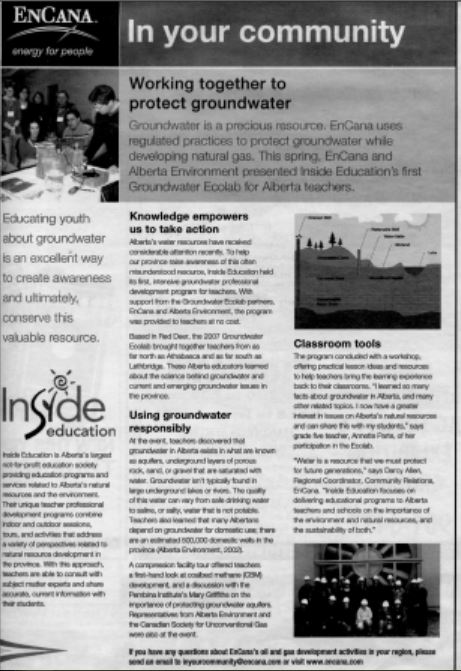
Inside Education is a nasty oil and gas industry propaganda machine.
When First Nations Elders from the Yukon toured frac fields of central Alberta, including my community, Pembina was devilish trying to control the tour for industry. Fortunately by then, I had been so extensively chased and harassed by Synergy Alberta and it’s pimp, the Pembina Institute, I foiled the institute’s bullying treachery. The Elders witnessed Alberta Environment Investigator Kevin Pilger intentionally introduce mud and gopher shit into frac-harmed resident Debbie Signer’s drinking water well during “testing” with which to blame her for contaminating the community’s aquifers via E. coli instead of Encana’s law violating aquifer fracs.
I’ve learned to read synergy reports like CAPE’s and Pembina’s looking for what’s left out.
2007: Pembina’s Mary Griffiths, a librarian, not a water or gas migration expert, wrote her industry and AER enabling (when it was EUB), propagandizing report, Protecting Water, Producing Gas, leaving out industry’s most damning, publicly available data and reports on how guilty the oil and gas industry is for causing its natural gas to migate into groundwater, water wells and to the surface. She referenced many media articles, but left out all by Andrew Nikiforuk. Griffiths (or her handlers) also left out Encana’s illegal aquifer fracs at Rosebud, the historic water well records on file with the regulator that state “Gas Present No” for all the families with methane and ethane contaminated water after frac’ing, and left out that none of the regional groundwater assessments reported that natural gas was found to be common in rural water wells, not even those in coal. Griffiths mentions the assessments in her report, but leaves out the most important finding in them: natural gas in water in Alberta is naturally uncommon until the oil and gas industry shows up. Alberta Environment’s water well database proves this. Griffiths also left out the damning reports published in the 90s by The Canadian Association of Petroleum Producers admitting how bad the problem is of gas migrating into groundwater from leaking industry wells in heavily drilled parts of Alberta and Saskatchewan and how few water wells had gas in them before oil and gas drilling, and left out how expensive it is for industry to repair its leaks (with many attempts to fix the leaks failing).
Griffiths attended the course for landowners with contaminated water wells put on by Drs Karlis Muehlenbachs, Barb Tilley and Martin Schoell, where the data was presented that industry had contaminated the Rosebud Hamlet, Campbell, Zimmerman, Signer, Lauridsen and Ernst water wells. Griffiths suggests bacteria and nature are to blame (industry’s favourite great escape route) even though baseline testing and historic records show this is not the case.
Guess who helped Griffiths/Pembina with their frac-enabling report?
- Lloyd Visser with ConocoPhillps
- Staff at the Alberta Energy and Utilities Board (later became ERCB, now AER), Alberta Geological Survey, Alberta Environment, Alberta Energy and Alberta Sustainable Resource Development.
- Dr. Alec Blyth, Alberta Research Council Inc. (name changed to Alberta Innovates). Blyth at the time was in direct conflict of interest. He had been hired to “independently” review the water contamination investigations by Alberta Environment and write up reports. He also ignored the historic water well records and blamed nature and bacteria for the water contamination cases. Many years later, Ernst obtained documents by FOIP proving that Alberta Environment had secretly edited his “independent” reports, and even changed his conclusions.
- Roger Clissold, Hydrogeological Consultants Ltd., consultant and company Encana hired to promote how great and safe the company’s practices are and investigate when water wells go bad, never of course blaming Encana. Clissold laughed as he pointed out to me at one of Encana’s con sessions in Rosebud that the company had violated my privacy rights, had printed my home location on an aerial map handed out to the public (mine was the only homeowner’s name printed on Encana’s Rosebud community map of about 100 residents). Clissold sneeringly warned me that I would get many unsavory visitors from then on (which I did).
- Dr. Roy Cullimore, Droycon Bioconcepts Inc. who pimps incomplete bacteria tests to help companies and regulators blame bacteria for industry’s pollution;
- Mike Dawson propagandist for the Canadian Society for Unconventional Gas (name changed to Canadian Society for Unconventional Resources);
- Marc Dubord (Encana’s hydrogeolgist) and Cam Cline, EnCana’s PR person (many of the drinking water contamination cases are in Encana frac fields, and of course, the company sold those fields off);
- Burns Cheadle, Outrider Energy Ltd.;
- Mike Gatens, Doreen Rempel and colleagues, Quicksilver Resources Canada (the Zimmerman drinking water contamination case was in an MGV frac field, Quicksilver’s pre-drinking water contamination name);
- Staff at Shell Canada Ltd. and Trident Exploration Corporation.
In 2015, Pembina loudly publicly cheered Notley NDP’s fraudulent climate change leadership plan that enabled more frac harms and pollution by pimping frac’d natural gas as “clean” (one of Pembina’s fav things to claim) with “limited adverse impacts” and exempting the oil and gas industry from the carbon tax.
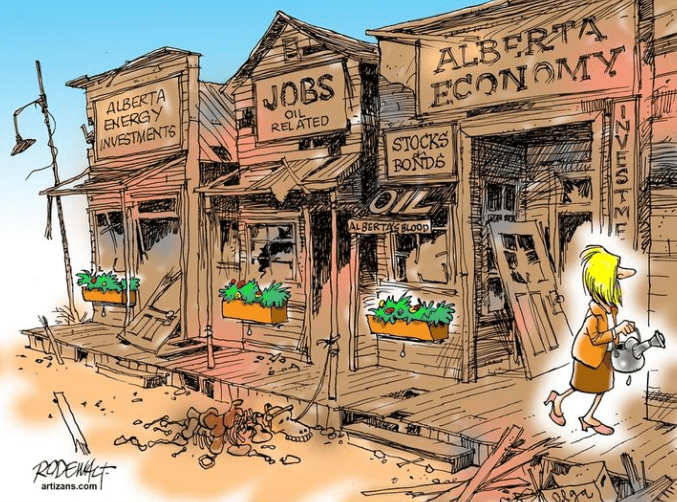
Quote from the “leadership” plan:
Our panel recommends an integrated approach, combining carbon pricing with an active phase out of coal-fired electricity, while ramping up the supply of renewable electricity, through an auction-based clean power call to provide additional financial support if required. This approach, which leverages Alberta’s significant natural gas resources to maintain low electricity prices while reducing emissions, is important in aligning Alberta’s energy supply with global requirements to meet climate change goals.
… With reliable, domestic natural gas supply, our recommendations on emissions policy can be more aggressive.
Did Encana/Ovintiv “peer review” CAPE’s report over Pembina’s shoulders?
CAPE left out vital information in their report too, including but not limited to:
2002: The Council of Canadian Ministers of Environment damning report of a workshop with regulators and other officials from across Canada on impacts from unconventional oil and gas and the enormous looming problem of industry walking from clean up (uploaded to this website when the report was removed from the internet after Ernst presented on it). Council of Canadian Academies frac panel also ignored this vital report by Canadian authorities, even with the lead, Dr. John Cherry, having written an entire chapter for the 2002 report, so ignorance cannot be the excuse.

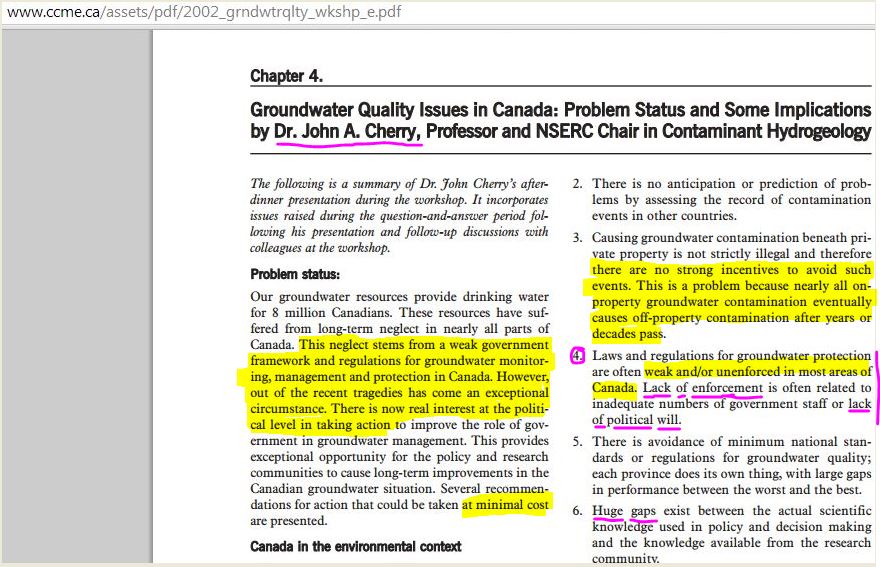
Nearly twenty years later, only rabid deregulation by federal and provincial governments and calling for more study has taken place, with no one in authority calling this travesty out. Guess what CAPE recommends? You guessed it, more study.
2011: Barb Tilley and Dr Karlis Muehlenbach’s published paper outlining numerous drinking water supplies contaminated with gases – methane and ethane – sourced from industry’s frac depths.
2012: The frac report by Health Canada, admitting significant health hazards and risks to groundwater and air from hydraulic fracturing, that has still not been released to the public but was uploaded to this website in 2014.
CAPE often references the notoriously dishonest Natural Resources Canada, NRC (which scrubs frac quakes from their website) and the misleading incomplete and dishonest report by the Council of Canadian Academies, without clarifying the “errors” in it, how inadequate it is, without pointing out the cherry picking by Dr. John Cherry, Chair of the panel or the conflict of interest of Maurice Dusseault, the “public advisor” to the panel (who had a frac patent filed at the time of being advisor to the frac panel, and all the other frac panels in Canada, even some in the USA, but not for the recent one in BC – I expect there had been too much public outcry about the obvious conflict of interest by the time BC did their review).
CAPE references the disparaging fraudulent work by Debra J. Davidson (at the oil and gas industry financed U of A). Davidson contacted me for an interview for her work which I declined because I saw immediately Davidson’s angle is to pretend like she cares about the frac harmed and landowners’ concerns then slide us into the synergy chute and discredits us via “mental illness” or “trauma.” Davidson also publicly used my work as if it were her own.
Davidson interviewed a frac harmed Alberta mother of two, and violated the family’s rights when Davidson’s paper was first published. Davidson refused to fix the harm and said publicly on Facebook she had nothing to apologize when her disparaging paper was called out (while privately apologizing – truly galling frac’d academia abusive shit!).
The mother had to write the journal herself and demand removal of the rights violating and disparaging parts, which the journal did. To my horror, the journal did not publish a public apology with their cleaned up posting of the paper.
Davidson was fully aware of whom and how she disparaged; in my read of Davidson’s paper referenced by CAPE, it was intentionally done to further stress and harm the frac harmed, as is the “Best in Class” standard when it comes to the oil and gas industry.
Then there’s the conflict of interest Debra Davidson had sitting on the Board of Directors of SPARK, which sells fracked gas contracts, at the time of her belittling “research.” Davidson got funding for her “research” by “somehow convincing MRU [Mount Royal University] that frac’ing was a community disaster” then goes on to market frac’d gas for SPARK. What corrupt oil and gas industry controlled shit show do we have in our “experts” and academia? And why the hell did CAPE reference her work? A condition of their funding?
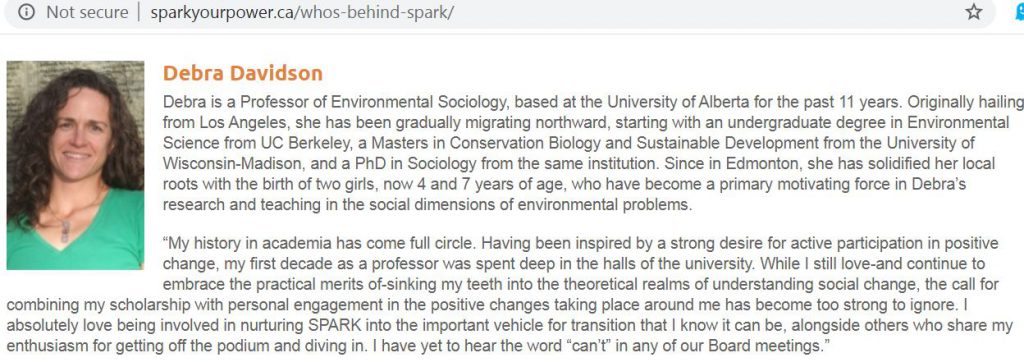
Snap above taken Jan 29, 2020, from http://sparkyourpower.ca/whos-behind-spark/
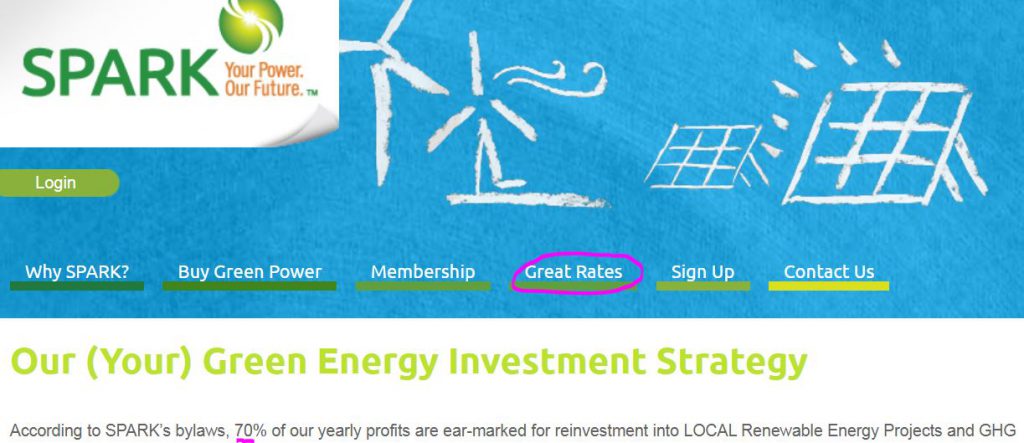
The “Great Rates” tab on the SPARK website takes you to ACE Energy’s rate plans which include Alberta frac’d natural gas https://www.acenergy.ca/rate-plans:

***
To understand how the controlled opposition propaganda of Synergy Alberta, including CAPE & Pembina Institute, works – please listen:
Psychological Warfare, Astroturfing, and Another Tobacco-Oil Connection 23 Min.
Daniel Edelman learned the tools of his trade combatting Nazi propaganda in WWII, then came home and put his psychological warfare training to work for American industry, including tobacco and Big Oil.
Or read the Transcript: https://www.dropbox.com/s/w1dbm5y4q1xaskl/S3Ep3_Transcript.docx?dl=0
Refer also to:
Without warning, Keepers of the Water remove Jessica Ernst off the Hydraulic Fracturing panel and replace her with a Pembina Institute representative Synergy Alberta Extraordinaire! Even in BC!
Encana, Cenovus, SPOG, The AER, Alberta Research Council (ARC), Alberta Environment and the Alberta Government gave funding to the Pembina Institute, long time synergizer This post has much damning evidence showing funding to Pembina from Encana, Cenovus, AER, Alta govt, Alberta Environment, with big oil’s babe, Preston Manning, on the advisory council to Pembina’s board, executive director and key staff!
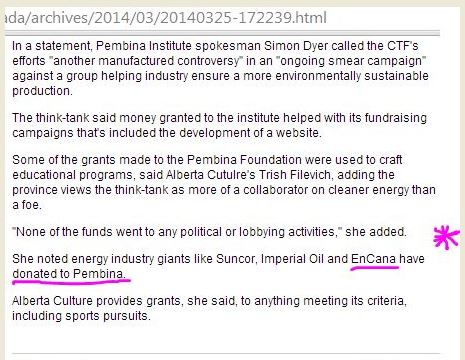

Is the Government setting up a fracked territory? Lots of damning details on Pembina Institute’s false front in this post, including on promoting natural gas.
… Instead of listening to world-renowned geochemist Dr. Karlis Muehlenbachs, who co-authored a peer-reviewed paper documenting numerous cases of groundwater contamination in Alberta frack fields and warns of the risks from fracking, the Committee listens to the Pembina Institute and Canadian Association of Petroleum Producers (CAPP). Pembina is a synergized group. Synergy is funded by the oil and gas industry and Pembina promotes regulations and the tired old story that natural gas is clean.
THERE’S MORE SYNERGY TO LEARN.
CAPE’s website on Robin Edger, Executive Director and CEO [WHO IS QUOTED CALLING FOR A FRAC BAN ACROSS CANADA, EVEN THOUGH THE CAPE REPORT DOES NOT AND WAS REPORTED BY LE DEVOIR AS BEING A DOCTOR!], Snap accessed Jan 29, 2020, text also copied into this post below it:

Robin [a lawyer, not a physician] is our Executive Director & CEO. He leads CAPE’s policy, fundraising, and communications work.
In his previous role leading the Ontario region for the Pembina Institute, Canada’s largest clean energy [Pfffft! Frac’d natural gas pimp and abuser of the frac’d harmed is more a accurate descriptor!] thinktank, Robin executed strategies leading to public policy change. He also led regional fundraising, including developing corporate partnerships and preparing funding proposals for foundations and government.
Prior to working at Pembina Institute, Robin practiced law at Fasken Martineau DuMoulin LLP in the Government Relations and Strategy practice group. He developed and executed government relations [propaganda?] campaigns and strategies on various government initiatives, such as broad policy reviews, statutory reviews, and international trade negotiations.
Robin was also formerly a senior advisor to Ontario’s Deputy Minister of Health. In that role, he provided strategic advice to the Deputy Minister to coordinate the work of the ministry and deliver on healthcare priorities. He developed subject matter expertise in the management of health care systems, including the oversight of hospitals, health care professionals, and public health.
Robin holds a Master’s of Law from Osgoode Hall Law School.
Robin can be reached at email hidden; JavaScript is required
Doctors release new report calling for moratorium [Why not “ban” in the headline? Why is calling for a Canada-wide ban just in Redger’s quote in the Press Release? Is his quote to give CAPE credibility and the lure to make us think it’s a decent report?] on fracking in Canada, Report by Canadian Association of Physicians for the Environment highlights serious health and environmental dangers associated with fracked natural gas, including links to birth defects, cancer, air pollution [Why leave out water pollution? Encana orders?], and global warming Press Release by The Canadian Association of Physicians for the Environment, January 29, 2020
Toronto: (CAPE) today released a new report calling for a moratorium on all new fracking development across Canada, along with the phase-out of existing fracking operations. [Far cry from a “ban.”]
The report, “Fractures in the Bridge: Unconventional (Fracked) Natural Gas, Climate
Change and Human Health,” highlights the serious health and environmental dangers of fracking, a relatively new process [Read Andrew Nikiforuk’s Slick Water to find out how old frac’ing is!] used across North America to extract natural gas from reserves that are embedded in impermeable rock. These buried natural gas reserves are accessed by drilling deep horizontal wells [SERIOUS “ERROR” THAT IS WELL KNOWN, but that doesn’t stop the synergizers like CAPE from spouting it to con the public into believing our drinking water is not at risk. One of the biggest frac lies lie told everywhere by companies and their enabling regulators and NGOs. It appears the controlled opposition groups are trying to hide that damning fact that companies (eg Encana, now Ovintiv) frac illegally right into community drinking water supplies with regulator and NGO blessings. COMPANIES FRAC ULTRA SHALLOW VERTICAL, SLANT, DEVIATED AND HORIZONTAL WELLS, NOT JUST DEEP HORIZONTAL WELLS – COUNCIL OF CANADIANS PIMP THIS SAME UNTRUE CRAP, NO MATTER HOW OFTEN I POINT THEIR “ERROR” OUT TO THEM. If these NGOs gave a sincere damn, why would they hide and or lie about that? More on this here] and blasting water, sand, and toxic chemicals at high pressure through the rock, creating fractures in order to release the gas.
The frightening health impacts that have been associated with fracking and natural gas extraction include adverse reproductive outcomes, low birth weight, birth defects, and
leukemia in children exposed in utero. Among the numerous environmental and safety impacts are increased climate emissions, release of toxic chemicals into air and water supplies, destruction of nature, social disruption of communities, and an increase in earthquakes. [THIS IS REALLY DIRTY OF CAPE/PEMBINA! IN SOME FRAC FIELDS, EARTHQUAKES STARTED AFTER FRAC’ING BEGAN. WHY IS CAPE BELITTLING THE DAMAGING, HIGH RISK QUAKES (EVEN THE SMALL ONES MIGHT BE CAUSING SEVERE METHANE LEAKAGE TO SURFACE ), PROVEN CAUSED BY WASTE INJECTION AND DIRECTLY BY FRAC’ING? WHAT DOES CAPE GAIN?]
Five provinces [Four provinces, not five. One province, PEI has a ban] in Canada and six US states have adopted a moratorium on fracked gas, along with Bulgaria [NO, they banned it], France [also banned it], Germany [Not true, Germany slickly changed the definition they use for frac’ing, likely fed to them by industry, to enable frac’ing while publicly boasting they banned it, more on this below], Ireland [the Irish banned it, it’s not a moratorium there], the Netherlands, Uruguay, Northern Ireland, Scotland, England [ban], and Wales [ban].
“Credible science suggests that fracking is dangerous to our health and detrimental to our environment. [If so, why not demand a ban?] We must urgently place a moratorium on all fracking in Canada to protect the health and safety of Canadians, and meet our emissions targets under the Paris Agreement,” says Dr. Éric Notebaert, CAPE Member and advisor on the report. Dr. Notebaert is an emergency physician in Montreal.
“Many adverse health effects have been identified in studies directed at fracking operations but the strongest evidence is for negative impacts on pregnancy and birth outcomes and the aggravation of asthma,” he says. “The evidence for low birth weight is quite strong, which is disturbing, as low birth weight is an indicator for a number of serious health impacts including developmental deficits in children and increased rates of cardiovascular disease in later life. There is also reason to believe that fracking increases the risk of leukemia among children whose mothers are exposed during pregnancy.”
About two thirds of the natural gas produced globally over the last decade has been
shale gas produced in Canada and the United States using fracking. In 2018, about 71
per cent of natural gas produced in Canada was unconventional gas from fracking. Most
of that came from Northeastern BC. Natural gas is composed almost entirely of methane
which is 86 times more powerful as a climate warming agent than carbon dioxide.
Emerging evidence shows that much more methane is leaking from these fracking
processes than was previously estimated.
“Fracking for natural gas in BC is catastrophic news for climate change,” says Dr. Larry
Barzelai, family physician in Vancouver and CAPE Board Member. “Global methane
levels have been steadily escalating over the last decade and new evidence points the
finger at fracking.”
Fracking, which is a water-intensive exercise, can also put pressure on local water tables
and contaminate water supplies. [That is frac polluter enabling! Typical Pembina Institute. Why is CAPE not reporting that frac’ing HAS contaminated water supplies? There’s ample evidence of it publicly available, some by companies intentionally frac’ing aquifers, some by companies accidentally frac’ing aquifers, some by companies frac’ing deep, some by companies frac’ing bitumen and heavy oil deep with steam injection; frac’ing deep as far back as 1987 when the EPA reported on it in detail and later reported on again by EWG, and even court arbitration ruled frac’ing contaminated drinking water] It involves the injection of chemicals – a number of which are very toxic – into the ground, which can result in contamination. Fracking also causes air pollutants to leak from the fractured rock, fracking wells, flares, and diesel equipment used for fracking.
Robin Edger, CAPE Executive Director, emphasizes that we can no longer treat natural
gas as a bridge fuel to a carbon neutral economy. [If not for the many oil patch funded NGOs spouting off about their beloved natural gas bridge, we would be years ahead now working mitigating the global warming crisis, and would most likely have preserved many drinking water supplies, and prevented many deaths and illnesses in community members, and frac patch workers]
“Natural gas is a fossil fuel that is feeding the climate crisis, compromising our ability to
meet our commitments under the 2015 Paris Agreement, and threatening our ability to
avoid catastrophic levels of climate change,” Edger says. “Fracking threatens our health
and is contributing to climate change. The only responsible step for government is to ban it outright.” [What puzzles me the most about CAPE, is why a lawyer, a past Pembina Institute lawyer, would say something this strong that is not said in the report?]
To download the report, visit: https://cape.ca/cape-fracking-report-en/
To download a backgrounder, visit: https://cape.ca/cape-fracking-bkg-en/
Media Contact:
Melissa Hughes
Communications Director
Canadian Association of Physicians for the Environment
email hidden; JavaScript is required
Fractures in the Bridge: Unconventional (Fracked) Natural Gas, Climate Change and Human Health by Ronald Macfarlane, MSc with Kim Perrotta, MHSc. Canadian Association of Physicians for the Environment (CAPE). 2020.
[I am only providing a few examples of the report’s many failings. It would take me too many days to outline them all, and I do not get paid for my time or expenses.]
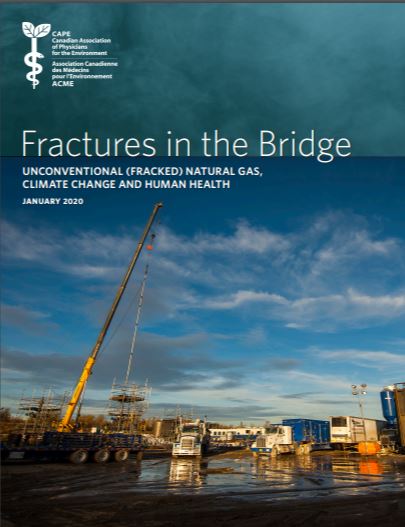
[Did Pembina (aka Encana/Ovintiv) direct which photo CAPE was to use? Why use one that doesn’t show the horrific air and light pollution?
Why not use a photo like these below of frac’ing in Alberta?]


[Or one of these photos of sour gas frac’ing by Encana near Fox Creek, Alberta? These photos have been public since the incident]


Executive Summary
The growth in exploitation of unconventional oil and natural gas (UOG) has raised concerns about the impacts of this development on human health and the environment. The main differences between the extraction of UOG and conventional oil and natural gas are: 1) the use of long, deep wells combined with directional and horizontal drilling across the geological formation [THAT’S GROSSLY INADEQUATE! Unconventional oil and gas in Canada includes frac’ing super shallow, even into drinking water aquifers contaminating them, on vertical, deviated, and slant wells without horizontal legs into coals, sands, and shales with many wells commingled intentionally by companies so that accurate isotopic fingerprinting of frac’d gases getting into water towers, homes, pump houses and businesses, blowing them up and killing or seriously injuring people, in one case, an entire family, is impossible. THIS DATA IS PUBLICLY AVAILABLE. SYNERGY REPORTS LIKE THIS ONE EXCLUDE THIS VITAL INFORMATION]; and 2) the use of high-volume [ALSO GROSSLY INADEQUATE, OFTEN PIMPED BY NGOS LIKE PEMBINA AND COUNCIL OF CANADIANS. NOT ALL UNCONVENTIONAL GAS WELLS ARE FRAC’D WITH HIGH VOLUMES OF FLUIDS.] hydraulic fracturing (fracking) where a mixture of sand, chemicals, and fluid is injected into the well under very high pressure to shatter the rock formation and release the oil or natural gas trapped in the rock. Canada is the world’s fourth largest producer of natural gas and oil respectively, responsible for about five percent of global production of each. Coalbed methane, shale and tight gas are unconventional natural gas resources that can be found across Canada. In 2018, about 71 per cent of the natural gas produced in Canada was unconventional gas – tight gas, shale gas, or coalbed methane. [WHY LEAVE OUT THAT MANY OF THESE ARE FRAC’D VERTICALLY, DEVIATED, SLANT AND ULTRA SHALLOW?]
About 70 per cent of Canada’s marketable gas reserves are unconventional shale and tight gas reservoirs. The oil sands, which are also an unconventional source of oil, use extraction techniques that are different from fracking [NOT TRUE! SAGD IS FRAC’ING THAT INJECTS STEAM UNDER EXTREMELY HIGH PRESSURE TO FRAC OUT BITUMEN TOO DEEP TO SURFACE MINE], so they are not included in this paper. [DID CAPE EXCLUDE SAGD BECAUSE OF THE EXTREMELY SERIOUS GROUNDWATER AND SURFACE CONTAMINATION ONGOING FOR YEARS BY CNRL IN ALBERTA THAT NO ONE KNOWS HOW TO STOP OR REPAIR?]
***
FRAC’D ALBERTA TARSANDS REALITY CHECK!
CNRL reports aquifer is contaminated with BTEX 10 km from closest seepage site, How far from steam injection site?
New-found Threat: Researchers discover ancient salt formation key factor in Alberta steam fracking disasters, Review by four engineers finds fractures spread like cracks on a frozen lake, resulting in uncontrolled seepage
Nikiforuk: RECORD BITUMEN SEEPAGE IN ALBERTA CONTINUES UNABATED
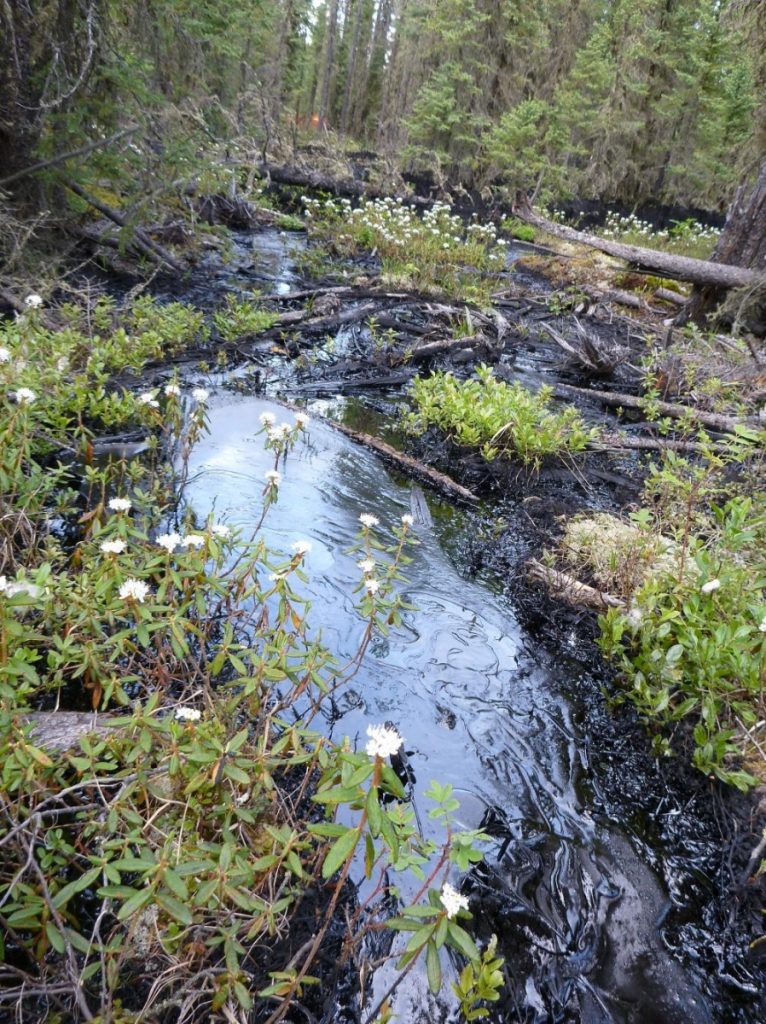
2013: CNRL’s bitumen seeping to surface from frac’ing steam injections in Alberta.
WHY NOT USE THIS PHOTO FOR CAPE’S COVER?
WHY WOULD CAPE LEAVE OUT THE MOST POLLUTINGHORRIFIC “HIGH PRESSURE” FRAC MESS IN ALBERTA?
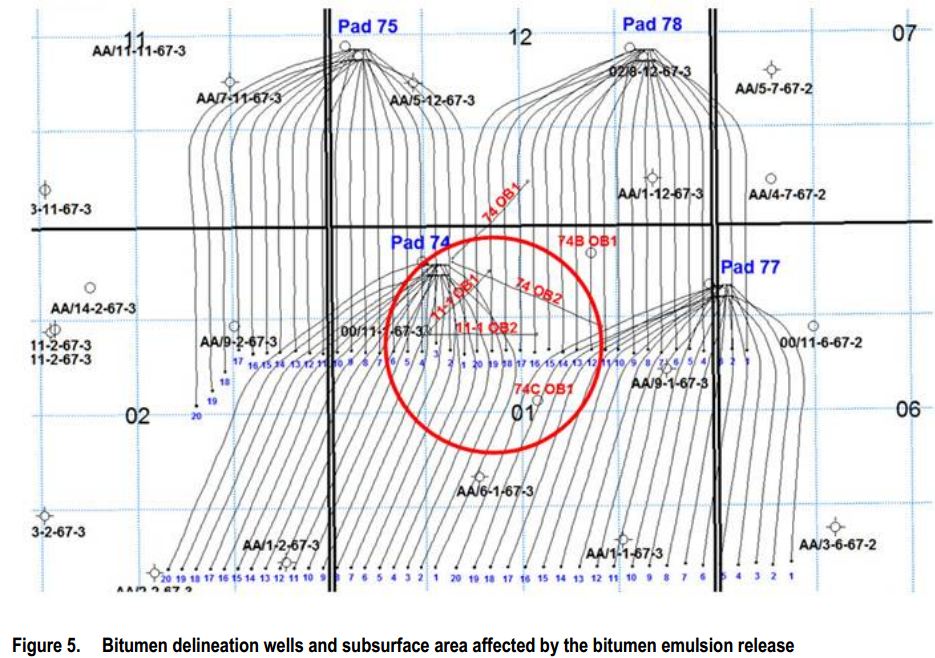
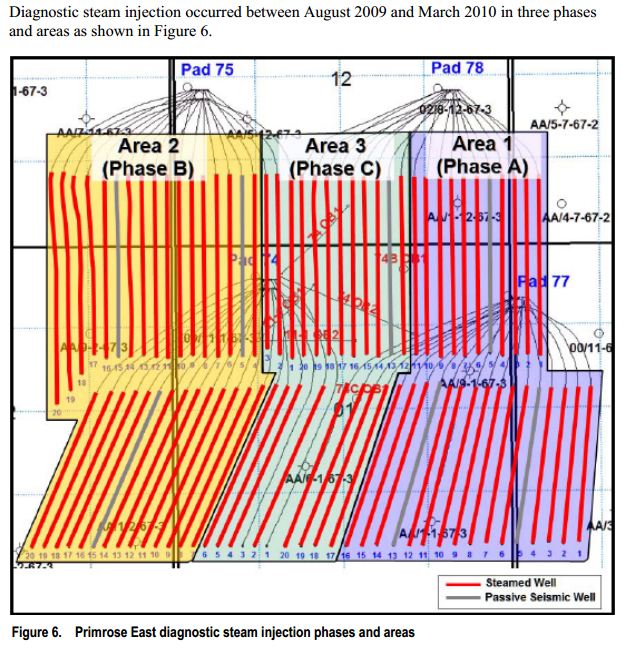
Alberta regulator investigates another CNRL well leak in troubled leaking Primrose field
Canadian Natural Resources Ltd. Primrose East Bitumen Emulsion Release January 3, 2009 ERCB (now AER) Investigation Report January 8, 2013
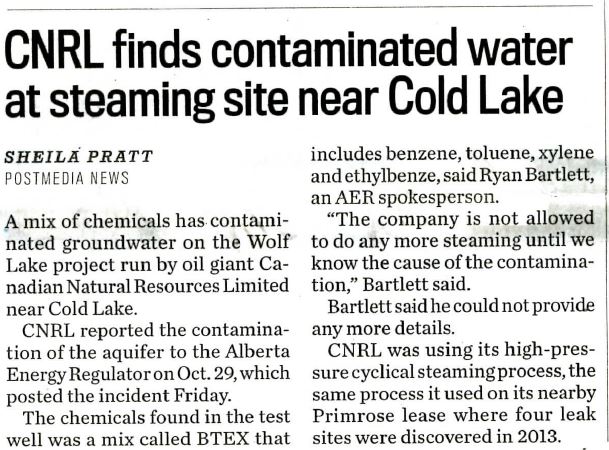
“You can fix a wellbore, but you can’t repair a fractured cap rock,”
CNRL Cold Lake Bitumen Geyser Continues, Despite Company Claims
PEMBINA EVEN REPORTED ON THE PROBLEM IN 2014! CNRL admits design failure could have caused Primrose bitumen leaks
… CNRL pioneered the more profitable high-pressure CSS technique, whereby pressure in the formation is raised to the point where the bitumen containing rock formation actually fractures.
END FRAC’D ALBERTA TARSANDS REALITY CHECK
***
… The number of jurisdictions around the world that have adopted a ban or moratorium on UOG development is increasing. These include Bulgaria, France, Germany, [IT’S NOT A BAN OR MORATORIUM. The German gov’t fabricated their own definition of frac’ing, much like CAPE has in this report, to enable frac’ing. Under their new “regulations” it appears protected areas can be opened up for “conventional” sands fracking.]
Fracking at depths of less than 3,000 metres will not be allowed in shale and coal formations. [Fracking of shallow and deep tight sands is allowed.]
Ireland, Netherlands, Uruguay, Northern Ireland, Scotland, England and Wales in the United Kingdom, and six US states. In Canada, the following provinces have a partial or complete moratorium on hydraulic fracturing: New Brunswick, Newfoundland and Labrador, Nova Scotia, Prince Edward Island [SEE ABOVE COMMENTS IN PRESS RELEASE], and Québec.
Over 1,000 different chemicals have been used in hydraulic fracturing fluids. The chemicals vary in toxicity with many lacking basic toxicity data. Some are known or suspected carcinogens, reproductive or developmental toxicants, or endocrine disruptors. Proprietary concerns obstruct access to information about the constituents of specific fracturing fluids. Horizontal drilling and hydraulic fracturing for unconventional natural gas is a water-intensive process. Water use has been increasing to improve well productivity. There is potential for adverse impacts on water courses, wildlife and drinking water sources from water withdrawals made in areas, or at times, of low water availability. [EVEN THE CANADIAN REGULATOR, NEB, NAME CHANGED TO CER TO HIDE A FEW SCANDALS, WAS CONCERNED IN 2009 ABOUT IMPACTS TO WATER, AND IN 2012, THE AEA (EUROPEAN COMMISSION DG ENVIRONMENT) WARNED:
A proportion (25% to 100%) of the water used in hydraulic fracturing is not recovered, and consequently this water is lost permanently to re-use, which differs from some other water uses in which water can be recovered and processed for re-use.]
The number of jurisdictions around the world that have adopted a ban or moratorium on unconventional oil and natural gas (UOG) development is increasing.
Risks of water contamination are primarily related to well construction and management of wastewater [That’s industry’s and its non-regulating regulators’ favourite song and dance pimped by controlled opposition groups like CAPE to deflect from the frequent and serious water contamination cases and home and water well explosions after nearby frac’ing. Unconventional resources are “tight.” They do not naturally like to let go of their gases, thus industry’s experiments with frac’ing and dewatering to force the gases to let go. Encana, with all its massive crews and machinery, took two years to figure out how to force the coals in Alberta to release gas. FRACS HAVE DIRECTLY CONTAMINATED GROUND WATER IN ALBERTA, TWO FAMOUS EXAMPLES: CREW/CALTEX ACCIDENTALLY FRAC’ING DIRECTLY INTO GROUNDWATER SOUTH OF GRAND PRAIRIE, CONTAMINATING IT, AND ENCANA INTENTIONALLY FRAC’ING DIRECTLY INTO DRINKING WATER AQUIFERS AT ROSEBUD, CONTAMINATING THEM]
Failures in well integrity can allow the migration of substances from the well into the surrounding groundwater or air. Contamination of surface and shallow ground water can also occur from spills, leaks, and/or the disposal of inadequately treated wastewater. Many of these adverse impacts are more likely to occur with abandoned and orphan wells. [NOT TRUE! NEW WELLS, ESPECIALLY THOSE FRAC’D AND REFRAC’D, ARE TURNING OUT TO BE WORSE LEAKERS THAN OLD ONES, AS WAS PREDICTED.]
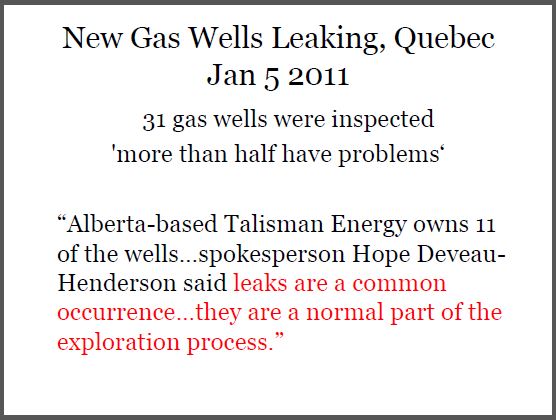
Negative impacts on drinking water quality are possible.
The lack of monitoring, including baseline monitoring before operations begin, makes it difficult to determine the cause of elevated concentrations of various contaminants in ground and surface waters around UOG wells. However, there have been instances in which contamination could clearly be linked to hydraulic fracturing activity. Drilling wells and extracting gas can also release naturally occurring radioactive materials (NORMs) and bring them to the surface where they can expose humans and other forms of life to radiation. When wastewater is stored in surface impoundments and evaporates, these contaminants can become more concentrated. Wind can disperse these particles into the air, making them a risk for human health. There are several sources of air pollutants at a well site: diesel equipment and trucks, flaring [And venting, often illegal], and general fugitive emissions including the volatilization of components of fracturing fluids at different stages of their use. Oil and gas operations are a source of nitrogen oxides (NOx) and volatile organic compounds (VOCs), which are precursors of ground-level ozone. Studies in the United States have identified UOG operations as important contributors to ground-level ozone concentrations. In addition, high levels of various toxic chemicals – such as radon, hydrocarbons, benzene, polyaromatic hydrocarbons (PAHs), and heavy metals – have been found near UOG wells.
There have been many instances of earthquakes caused by hydraulic fracturing and the injection of fracturing water into deep wells in Canada. While many of these earth movements are too small to be felt, stronger events are possible [AIAYAIAIAY! INFURIATING! It reads like Darin Barter, previously w AER, now w CER (prev NEB), wrote the quake sections. Why belittle such damaging frac harms? Many have felt frac quakes, even small ones. Many have suffered injuries in their homes, and damages to private property, land, and water wells from quakes. The problem is so serious that NRC’s Earthquakes Canada is scrubbing quakes from their website after posting them]. For example, an event of 4.6 moment magnitude was recorded on August 17th, 2015 in the Beg-Town area in the North Montney BC and was attributed to UOG developments. [Why not report on the the much more damaging frac quakes near Red Deer, confirmed caused by frac’ing by Vesta and the AER? The frac quake knocked out power to 4,600 Customers and were felt by many. Or why not report on the frac quakes in NEBC felt over 180 km away? Or the frac quakes at Fox Creek, felt 280 km away? Or the “small” 3.8M quake in Spencer Oklahoma, felt by 1,300 people up to 928 km away. Or the smaller frac quakes in Blackpool UK by Cuadrilla that would not stop even after the company stopped work. 2.9M quake left by many, damages countless homes, 450 residents protest, 2.1M quake, felt by residents, days after previous record set at 1.6M, also felt by residents? Why not provide details on the 5.6M quake in Pawnee Co, felt by 58,628 people as far as 2,323 km away in Boston?]
…
Of the earthquakes recorded in the Western Canada Sedimentary Basin between 2010 and 2015, 62 percent of earthquakes with M≥3 were induced by hydraulic fracturing and 31 percent by wastewater disposal; only 7 percent were natural earthquakes (Atkinson et al., 2016; Review Panel, 2019). [Why report old quake data in a 2019 review by BC’s frac panel and a 2020 report by CAPE? And why report what BC’s Frac Review Panel said? Why would CAPE not do their own review of the publicly available frac data (well, other than what NRC secretly scrubs away)? The mega frac quakes in Alberta and damaging frac quakes in BC happened after 2015! Slick way to diminish the severity of the problem?]
…
While, until now, these induced earthquakes have not resulted in damage to structures in BC, it is not known if they could in the future.
[Frac quake damages to structures in BC Reality Check:
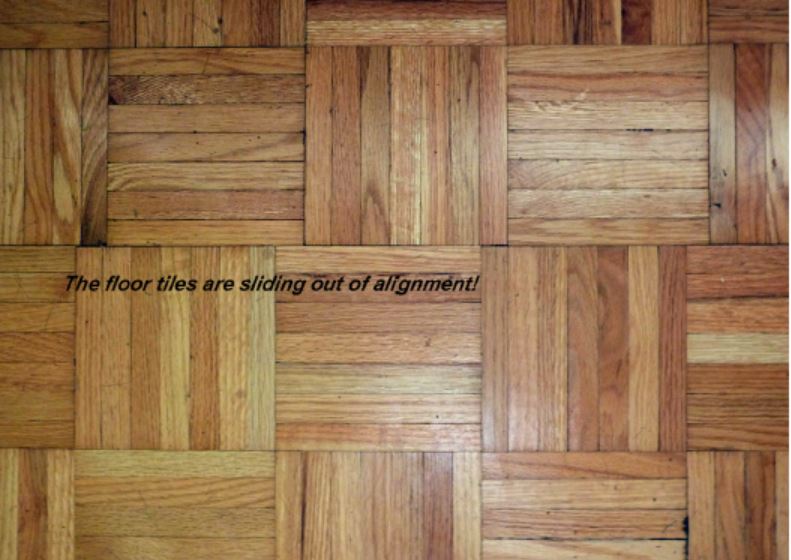
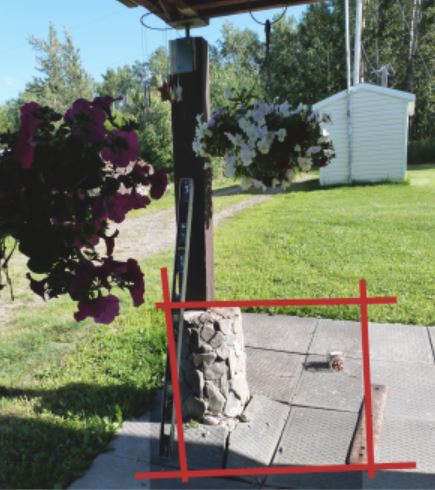
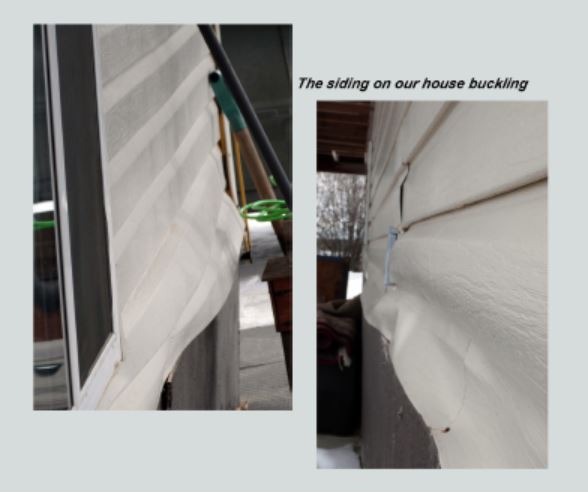
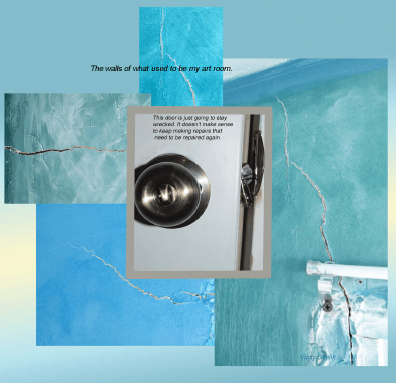
End Frac quake damages to structures in BC Reality Check]
…
CONCLUSIONS AND RECOMMENDATIONS
Taking into account: the increasing evidence of adverse health, environmental and community impacts from unconventional oil and gas development; the need to respect and honour commitments made to the Indigenous peoples of Canada [what about needing regulators to regulate and the need to respect the commitments made to thousands of non-Indigenous frac-harmed citizens, bullied, shamed and blamed by companies, regulators, police, academics and NGOs?]; the contribution of unconventional oil and gas development to climate change; Canada’s commitment to drastically decrease its carbon emissions by 2030; and the significant health impacts associated with the continued use of fossil fuels; a rapid and just transition away from natural gas and oil extracted with fracking to clean and equitable renewable energy sources is needed. [A far cry from a Canada-wide frac ban]
CAPE recommends that:
1 Each province and territory with unconventional natural gas and oil reserves should [A powerful escape hatch word loved by NGOs, industry and regulators to avoid doing anything responsible. Why not say “urgently must?”] declare a moratorium on new development of those reserves with fracking;
2 Each province and territory that is currently extracting unconventional natural gas and oil reserves with fracking should: a) Develop and implement a strategic plan to phase out existing production to meet the goals stipulated in the 2015 Paris Agreement and in accordance with the findings of the 2018 Intergovernment Panel on Climate Change (IPCC) report; b) Ensure that health and equity impact assessments (HEIA) are conducted to inform the phase-out schedule for existing natural gas and oil wells that involve fracking; and c) Develop and implement strong regulations [More enabling, often pimped by NGOs. We have strong regulations! Companies are ignoring laws and regulations to increase profits and dump clean up on the public, with regulator, court, and politician blessings] which ensure that: oil and gas assets reaching their end of life are not offloaded; tight timelines are applied to their decommissioning; and land reclamation is held to standards that will prevent adverse impacts on the environment, wildlife and/or communities;
3 The federal, provincial and territorial governments: a) Phase out all subsidies that are provided to the development or promotion of unconventional natural gas and oil reserves that are extracted with fracking to meet the goals stipulated by the 2015 Paris Agreement and the findings of the 2018 IPCC report; b) Develop programs and policies to increase energy efficiency and develop clean and equitable renewable energy sources to transition away from reliance on all fossil fuels including natural gas to meet the goals of the 2015 Paris Agreement; and c) Develop and fund, a just transition plan, in collaboration with workers and communities affected by the transition from fossil fuels which includes: bridge funding [Why? Citizens and communities harmed by frac’ing don’t get bridge funding] for older workers nearing retirement; retraining for younger workers; and community investments in new technologies and industries to revitalize and transform affected communities.
…
Birth defects, cancer and disease among potential health risks from fracking for Canadians, doctors warn by Kieran Leavitt, Edmonton Bureau Toronto Star, Jan. 29, 2020
Health impacts and a damaged environment are among concerns raised in a new review on the fracking of natural gas written by a Canadian non-profit made up of physicians. [Nice trick by CAPE. Macfarlane, lead author of the reprot, is not a physician, and not part of CAPE.]
Due to the chemicals involved in fracking, the practice’s wide-ranging impacts on humans includes the potential for birth defects, cancer, neurological issues, psychological impacts, disease and illness, reads the review by the Canadian Association of Physicians for the Environment (CAPE).
The report, based on the available research [Not true, much important research and data was left out, just like Dr John Cherry did with his shoddy frac panel report released with massive fan fare (and dishonesty) in 2014.] was released Wednesday, and outlines the group’s findings on fracking [But, the lead author is not part of the group], also known as hydraulic fracturing, which is a widespread practice in Canada.
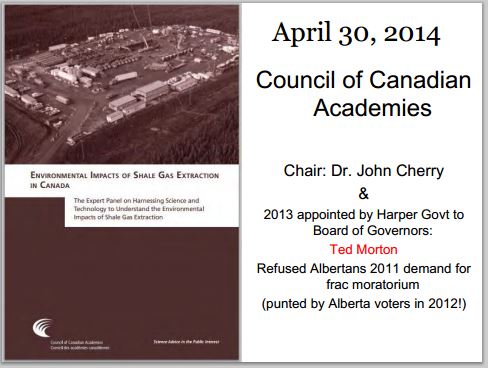
[2014, Six years ago after many reviews and additional study, we’re still being frac’d!]
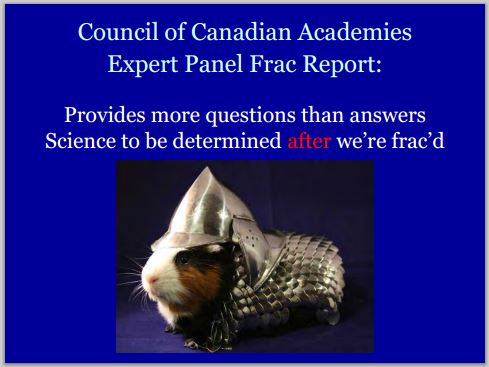
Dr. Melissa Lem, a CAPE board member and physician based in the lower mainland of British Columbia, told the Star that much of the research on fracking comes from the United States and that there’s a need for more to be done in Canada.
[Ah ha! Now we see the reason for CAPE’s luring quote by their Executive Director lawyer, and their report – MONEY! Saying that more study needs to be done is one of synergy’s (and experts and NGOs who get more and more funding to study more and more, write more and more reports to delay responsible action while ordinary citizens, we the frac’d, continue to be ruthlessly used as guinea pigs) favourite frac enabling statements. John Cherry and his frac patent conflict of interest panel and report said it, so did the BC govt frac review, and many others. Coming from CAPE, supposedly trained persons who swear an oath to do no harm, it’s vile. (Perhaps that’s why CAPE used a non-physician as lead author?) It enables frac’ing; it captures, by lure of funding, academics and “experts” to get paid to do more and more research while companies get to keep frac’ing. The research is in, the data is in.
It matters not where frac’ing happens, the harms are endless, horrific, and not mitigated by borders, regulations or any doctor or any expert.]
Still, she said the negative impacts on humans and the environment from fracking are well documented and shouldn’t be discounted.
“Canadians have to be aware that fracking is happening in our country and that it’s causing some extreme harms to our water sources, our air quality, our land, and also contributing to the climate crisis,” she said.
“We’re hoping by bringing the health voice to this issue, that we can help change people’s minds and just make them more aware.”
… Its main recommendation for all jurisdictions is “a rapid and just transition away from natural gas and oil extracted with fracking to clean and equitable renewable energy sources.” [which is a far cry from the “ban” called for by Executive Director Edger in CAPE’s press release with their report]
The report outlines how the process can contaminate drinking water, negatively impact wildlife, and pollute the air. [There’s ample documented evidence, data, regulator reports, and even court arbitration rulings proving that fracing is contaminating drinking water, but, CAPE ignores all of it in their report]
More than 1,000 chemicals have been found in the fracking process and some are known or suspected carcinogens. Some are toxic and others can interfere with hormonal systems.
“Information on a large number of additives is not disclosed to protect intellectual property rights,” reads the report.
It adds that wildlife can be impacted through contaminated drinking water. As well, people can be exposed to radiation that can be released by fracking and air pollution can arise from mining operations. [Why is CAPE not reporting the obvious, that wildlife and humans are impacted by contaminated drinking water, with families impacted by frac contamination venting out of water taps, filling homes, garages, businesses with explosive gases? Why not report that families are being exposed to increases of known killer, cancer causing, radon gas proven increasing in their homes in frac fields?]
… While most earthquakes that result from fracking have been small, it’s possible larger events can happen. “For example, an event of 4.6 moment magnitude was recorded on August 17, 2015, in the Beg-Town area in the North Montney B.C. and was attributed to (unconventional oil and natural gas) developments.” [See above for my comments on this lame paragraph]
In the United States, research findings outline how workers in the sector can be exposed to chemicals and other safety risks. [There is research on chemical harm and other safety risks to Canadian oilfield workers, but CAPE left it out] They have a risk of death at seven times the average of the rest of the oil and gas industry.
Some provinces in Canada, like New Brunswick, Nova Scotia, Prince Edward Island, Quebec and Newfoundland and Labrador, have already banned fracking, either entirely or in part. [The only jurisdiction in Canada that officially banned frac’ing is PEI] Other jurisdictions around the world have done the same in recent years.
The review also pushed back on the common notion that natural gas operations are more environmentally friendly than other energy projects that produce carbon dioxide emissions.
“When it comes to climate impacts, these emissions are far more harmful than carbon dioxide (CO2) as methane’s global warming potential is 86 times that of CO2 over a 20-year time frame.”
Doctors call for end to hydraulic fracturing in Canada, According to Canadian gas production forecasts, shale gas and tight gas will continue to increase in the coming years by Alexandre Shields, January 29, 2020, Le Devoir [Google translate of the article copied below, click link to read in French. A proper translation will be added next week]
Fracturing gas, a growing industry in Canada, poses serious risks to human health, says the Canadian Association of Physicians for the Environment (CAPE) in a new report released Wednesday. Health specialists are therefore calling for a moratorium on the expansion of the industry and a gradual halt to operations in progress.
“Studies have shown that fracking has many harmful health effects, but the most convincing data relate to adverse effects on pregnancy, birth outcomes and asthma,” said Éric Notebaert, member of ACME, by presenting the report, entitled “A fractured transition”.
“The data indicating low birth weight is quite convincing, which is worrying given that it is an indicator for several serious health problems, including developmental disorders in children and an increased incidence of cardiovascular disease in adulthood. There are also reasons to believe that fracking increases the risk of leukemia in children whose mothers were exposed during their pregnancy, ”adds Dr. Notebaert.
Growing industry
The risks are all the more real, according to CAPE, as hydraulic fracturing is increasingly used in Canada to exploit gas resources in the west of the country. …
It is the growth of this production in the west of the country, mainly in British Columbia and Alberta, that justifies the construction of liquefaction plants and liquefied natural gas export terminals.
The natural gas that would be liquefied at the Énergie Saguenay plant, of GNL Quebec, would come from Alberta and would be exploited mainly by fracturing. However, neither the federal government nor that of Quebec will take into account the environmental impacts of this production in their environmental assessment of the project.
Should we assess the environmental and human health impacts of the gas production that will be transported to the Énergie Saguenay plant? “We trust the authorities in place who oversee and manage the development of natural resources in Western Canada responsibly. They are the best placed to ensure rigorous management and to ensure the safety and well-being of the citizens concerned, ”replies the senior director, public affairs and community relations, Stéphanie Fortin.
“Canada, Alberta and British Columbia set themselves apart from other natural gas producers in the world by environmental standards considered to be among the strictest worldwide,” [What good are best in the world, or strictest standards/laws/rules when companies blatantly ignore them with regulators helping them get away with it?] she adds, stressing that a “scientific journal by the government of British Columbia has already concluded that “existing regulations protect against potential impacts”. [See above for a few examples of how our regulations do nothing to prevent or repair frac harms]
Climate risks
In addition to the impacts on human health, CAPE recalls that fracturing operations can require up to 10 million liters of water for each borehole. And according to the conclusions of various studies published in recent years, included in the ACME report, shale gas could be significantly more polluting than conventional natural gas.
Fracturing produces large amounts of methane, a greenhouse gas that can be at least 30 times more powerful than CO2, according to the Intergovernmental Panel on Climate Change (IPCC) .
These greenhouse gas emissions make ACME say that natural gas does not constitute “a transition fuel towards a carbon neutral economy”, according to its director general, Robin Edger. “Natural gas is a fossil fuel that contributes to climate change. It jeopardizes our ability to meet our commitments under the Paris Agreement of 2015 and jeopardizes our efforts to avoid the catastrophic effects associated with climate change, ”he insists.
“In short, fracking poses a threat to our health in addition to contributing to climate change. The only responsible action governments can take is to ban it outright, ”adds Dr. Edger. [CAPE’S bio on Mr. Edger states that he is a lawyer, not a doctor. See above.]
A PERMANENT MORATORIUM DECREED ON NATURAL GAS
A permanent moratorium has been decreed on natural gas exploited by fracturing in Quebec, with the prohibition of fracturing operations in the shale rock formation, where we find the gas potential of the province, in the St. Lawrence Valley. However, this ban resulted in a government lawsuit launched by the Questerre company. The Alberta government and business are scheduled to meet again in February to decide on the next steps in this process before the courts.
A dozen companies, mostly from outside Quebec, currently hold a total of approximately 13,000 km² of exploration permits in the south of the province, between Montreal and Quebec. Some have already mentioned the possibility of bringing actions to obtain financial compensation from the government.
Refer also to:
Who do Caleb Behn and Council of Canadians represent? One Step Forward, Two Steps Back: Call for Federal Fracking Regulation Flies in the Face of Call for a Ban Is this why CAPE’s lawyer, Robin Edger, is quoted calling for a Canada-wide frac ban in the press release, while the CAPE report itself does not?

Frac’ing was never any kind of bridge. I watched the con grow; it was/is just to increase private profit for a few while harming many.
***
In Jan 2020, Encana left Canada and also changed its name – to Ovintiv – to better pursue investor money.
